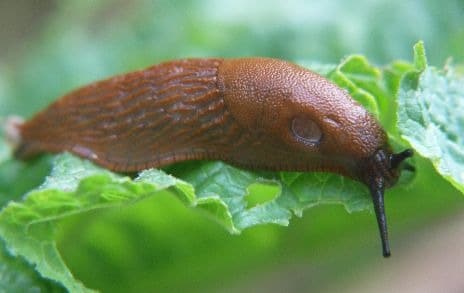Your garden is alive. It’s home to creatures great and small, all playing their part for the wider ecosystem and helping your garden plants to grow.
In this blog I’m going to give you a snapshot of some of the mammals and insects that are living in your garden right now; where to find them, what their jobs are, in the hopes to open your eyes to how beneficial they are for gardens everywhere…
Slugs
A common garden pest, slugs have been around in the UK since the end of the last ice age. As a nocturnal species which is prone to dehydration, slugs spend most of their lives underground. They only venture out when conditions are cool and wet—which is why we see hundreds of tell-tale silver trails in our gardens the morning after a cold rainy night.

As we all know, slugs love eating plants! In the UK alone, they cause £8 million of crop damage per year.
A great natural way to protect plants from slugs in your own garden is to plant sacrificial flowerbeds to tempt slugs away from the plants you care most about. Choose Nasturtium, Hosta, Petunia, Dahlia and Delphinium for this purpose.
Alternatively, go the opposite route and fill your garden with plants that slugs dislike eating. These include plants with tough leaves that they find difficult to chew (e.g. Geranium, Ferns) or those that taste bitter (e.g. Spurges, Foxgloves).
Microbes
Microbes are miniscule forms of life that can usually only be seen through a microscope. They are so small, in fact, that they are measured in millionths of a metre and a single gram of garden soil can contain as many as 1 million of the critters!
Common microbes that you’ll find in your own garden include bacteria, algae and fungus.
Microbes are essential to the health of our gardens. They eat dead creatures, animal waste and decaying plant matter, recycling it and sealing nutrients into the soil for use by our plants.
To create a microbe-friendly environment in your own garden, mix lots of organic material, like manure or compost, into your soil or cover it with a natural mulch, such as bark chippings.
These materials will slowly be broken down by microbes, adding moisture, air and nutrients to your soil as this happens. Another great option is to purchase or make compost tea. This is a concentrated liquid which contains billions of beneficial microbes.
It can be added to soil and sprayed onto the foliage of plants for the ultimate microbial boost.
Bees
The UK is home to over 250 species of bee, from fuzzy bumble bees to lean honey bees. We have stripy black-and-white bees and gristly orangutan-like bees.
These different types all play a hugely important part in our ecosystem. They pollinate our crops, garden plants and wild flowers, helping to keep us fed and ensure the next generation of plants comes into existence.
Yet, bees are now in big trouble. In recent winters, we’ve lost as much as half of the bee population in some areas of Europe. The good news is that this is an area in which gardeners can have a truly incredible impact.
Planting flowers that provide nectar and pollen for bees throughout the season is a brilliant way to support them and help bolster their numbers. Plants to choose include Globe thistles, Lavender, Buddleia and Wallflower.
Foxgloves, too, are a hit with bees (and, as we saw earlier, won’t get eaten by slugs—double win!). If you have herbs, like Sage, Chives, Thyme and Oregano, in your garden, then letting some of the stems flower is an effort-free way to feed the bees.
Use rose petals in your cooking wherever you might use strawberries—in salads, drinks and jams, or as edible decoration.
There are so many fantastic wildlife species that contribute to our garden, why not give gardening for wildlife a go and see how your plants thrive!


Leave A Comment